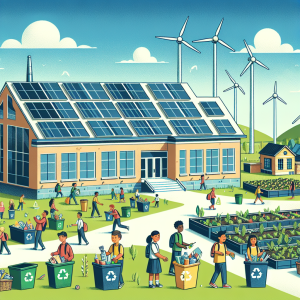Promoting Biodiversity in Modern Agriculture
Promoting biodiversity in modern agriculture is a pivotal objective for ensuring sustainability while addressing global food security challenges. At its essence, biodiversity in agriculture refers to the variety and variability of animals, plants, and microorganisms used directly or indirectly in food production. As conventional farming systems have often led to monoculture practices and habitat degradation, the current focus shifts towards integrating biodiversity to enhance ecosystem health and productivity.
The importance of biodiversity in agriculture cannot be overstated. It can stabilize and increase yields by providing resilience against pests, diseases, and changing climatic conditions. Diverse ecosystems function more effectively, supporting various services such as pollination, nutrient cycling, and soil fertility. Incorporating native plant species into agricultural landscapes, for instance, helps attract natural pollinators and beneficial insects, reducing reliance on chemical inputs.
One of the primary strategies for enhancing biodiversity is the practice of crop diversification. By rotating diverse crops, farmers disrupt pest cycles, manage disease risks, and improve soil structure. Introducing leguminous plants offers additional benefits, as they fix atmospheric nitrogen, enriching soil quality and supporting subsequent crops. Successful crop diversification requires understanding local ecological conditions and choosing varieties well-suited to those environments.
Agroforestry is a practice that merges agriculture and forestry practices to create a multi-functional landscape. Integrating trees and shrubs within crop and livestock systems offers numerous advantages such as providing shade, shelter, and additional sources of income via fruits, nuts, and timber. Varied canopy layers increase habitat availability for different species, improving biodiversity. The implementation of agroforestry must consider tree-crop compatibility and long-term management to maximize benefits.
Cover cropping is another technique to promote biodiversity and soil health. Cover crops like clover, vetch, and rye not only prevent soil erosion but also enhance microbial diversity. These crops contribute organic matter, support soil structure, and suppress weed growth naturally. Selecting cover crops tailored to specific climates and soil types maximizes their positive impact on agroecosystems.
Conservation tillage is a practice that minimizes soil disturbance, preserving its structure and health. While traditional tillage breaks the soil for seedbed preparation, it also disrupts soil organisms and contributes to erosion. Conservation methods involve reduced tillage or no-till systems that maintain a soil cover using residues from previous crops. These practices enhance soil biodiversity, improve water retention, and reduce carbon emissions.
Integrated pest management (IPM) is a holistic approach to controlling pests that relies on understanding pest ecology and employing natural predators. Rather than indiscriminate pesticide use, IPM employs biological, cultural, mechanical, and chemical controls to manage pest populations sustainably. Crop rotations, habitat manipulation, and biological control agents are integral strategies within IPM to protect crops while fostering biodiversity.
Promoting beneficial insects and pollinators is crucial to boosting agricultural biodiversity. Establishing hedgerows and field margins with flowering plants provides habitats and foraging opportunities for insects like bees and ladybugs. These habitats serve as corridors, connecting fragmented landscapes and enabling species movement. Plant diversity within these areas influences the richness and abundance of pollinators, which directly correlates with crop yield and quality.
Soil health is central to biodiversity, as it underpins plant growth and farm productivity. Practices that enhance soil organic matter, such as composting and rotational grazing, improve soil structure and microbial diversity. Maintaining diverse microbial communities within the soil supports nutrient cycling and disease suppression, essential for a resilient agricultural system.
Maintaining water quality and availability is another aspect of promoting biodiversity. Agricultural runoff can contaminate waterways, affecting aquatic ecosystems. Employing riparian buffers and constructed wetlands can effectively filter pollutants, reducing their impact. Practices that increase water infiltration and retention, such as contour farming and terracing, also contribute to landscape biodiversity by supporting diverse plant and animal species.
The integration of technology in biodiversity promotion has opened new avenues. Precision agriculture uses data-driven insights to optimize inputs and monitor environmental variables. Using sensors and drones, farmers can assess field-level variability, allowing them to apply water, fertilizers, and pesticides more efficiently. This targeted approach minimizes environmental impact and supports biodiversity by reducing chemical usage.
Community engagement and policy support are vital for the widespread adoption of biodiversity-promoting practices. Farmers’ knowledge sharing, supported by institutions and government policies, can drive collective action towards sustainable agriculture. Incentives such as subsidies for diversified farming systems or certification schemes that recognize biodiversity-friendly products can motivate farmers to transition from conventional methods.
In conclusion, promoting biodiversity in modern agriculture is intertwined with environmental sustainability, food security, and climate resilience. Through practices such as crop diversification, agroforestry, and conservation tillage, farmers can harness the benefits of biodiversity, creating robust and productive agroecosystems. By integrating technological advancements with ecological knowledge and policy support, agriculture can sustain its crucial role in nurturing both humanity and the planet.




